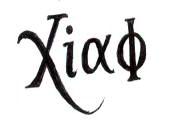Challenges to neocolonialism (Manila Times Walking History)
by xiaochua
By Michael Charleston “Xiao” Chua
October 31, 2020
IN 1996, 50 years after the Americans gave back Philippine independence, a televised reenactment of the ceremonies played out at the Luneta. But during the solemn moment of the raising of the Philippine flag and the lowering of the American flag, the Stars and Stripes got entangled with the Three Stars and the Sun for a few minutes as the National Anthem played. But just before the last note of our anthem played out, the flag was finally untied and flew alone freely. In many ways, this gaffe reflected a reality, jokingly called the Star-Entangled Banner — our tumultuous special relationship with the United States, which highlighted our dependence on a foreign power.
The end of World War 2 in 1945 paved the way for the Cold War and a polarized world between the United States and its allies (First World War) and the Soviet Union and their satellites (Second World War). On the premise of stopping the spread of communism in Southeast Asia and keeping their interest intact in the region, the United States government tightened its grip on the Philippines.
Filipino leaders were caught between the devil that they knew and the devil that they didn’t and expressed their loyalty to America. Luis Taruc and Jesus Lava, leaders of the Communist guerrilla group Hukbo ng Bayan Laban sa Hapon, were unseated in Congress; deprived of their House seats, they went back to the mountains to wage an armed struggle. Aside from agrarian problems, they lamented the seeming continuation of US colonialism. Manuel Roxas, the first president of the new republic, wanted to follow the US line to crush the rebellion. But two years after assuming the presidency, before he could fulfill his potential in the pinnacle of his long career, he died in an American base in 1948. His vice president, Elpidio Quirino, succeeded him.
To say that all the leaders of the Philippines did not try to exercise an independent approach with the Americans is not totally accurate. Quirino, for one, was more pragmatic in his approach with the Americans. While negotiating the US Bases Treaty, Roxas played the agreeable person while his vice president chopped down the proposed 70 bases to 23, (16 permanent and six for emergency use). One US diplomat quipped, “The trouble with Quirino is that he is taking Philippine Independence too seriously.”
When Quirino became president, contrary to what the Americans thought, he believed that the Huks had legitimate grievances that had to be heard. He was able to successfully bring Taruc down the mountains to meet him in Malacañang but frustration and intrigue propelled Taruc to return to the mountains once again and the battle against the Huks ensued. The ambush of Doña Aurora Aragon-Quezon, the philanthropist widow of President Manuel Quezon, and her party by some rogue Huks did not help the situation. A former guerrilla leader and congressman from Zambales, Ramon Magsaysay, was picked by Quirino to be secretary of national defense to lead the fight against the Huks.
Quirino’s foreign policy prioritized relations with the United Nations rather than the United States. This jibed with his decision to aid 6,000 White Russian refugees fleeing from China, and the Philippines sending its best combat battalions to help South Korea defend its democracy from North Korean invasion.
To demonstrate the intervention of Americans in the Philippine elections at that time, the CIA urged Quirino’s political son, Magsaysay, to challenge him in the elections of 1953 and helped him in the campaign. Despite his competence, Quirino’s health and allegations of political patronage did not help his campaign. Magsaysay won in a landslide and, with a carrot and stick approach, weakened the Huk rebellion.
Nationalist lawmakers like the Senators Jose Laurel and Claro M. Recto pushed for the teaching of José Rizal’s life to counter neocolonialism despite great opposition from the Catholic Church hierarchy because of Rizal’s depiction of priests in his works. As president, Magsaysay tried to associate the country with the non-aligned countries (Third World). But when he died in a plane crash before running for a second term in 1957, he became America’s poster boy, a champion of democracy in Asia. An award was instituted in his name to honor the greatness of spirit in Asia like the Nobel, the Ramon Magsaysay Award.
President Carlos P. Garcia adopted a Filipino First policy in the economy, and President Diosdado Macapagal adopted a policy of the Philippines turning East. strengthening diplomatic relations with Asian and African countries. When he moved Philippine Independence Day from July 4 to June 12 the Americans were annoyed.
Despite these efforts, nationalist educators lamented the continuation of colonial education, calling it the miseducation of the Filipino. Corruption became rampant.
The people needed a leader that could inspire them just like John F. Kennedy, the brilliant young war-hero president with an adorable family, inspired America. In 1965, that promising leader did emerge: Ferdinand E. Marcos.
